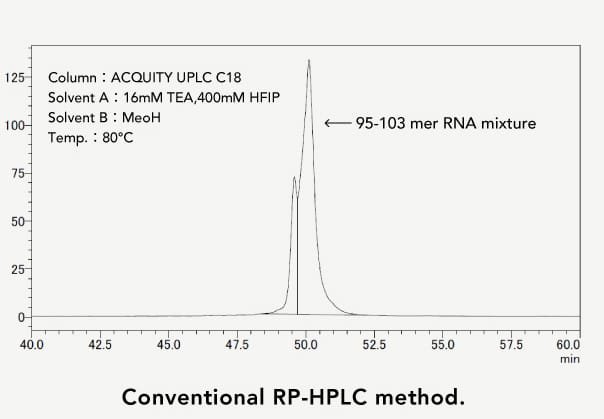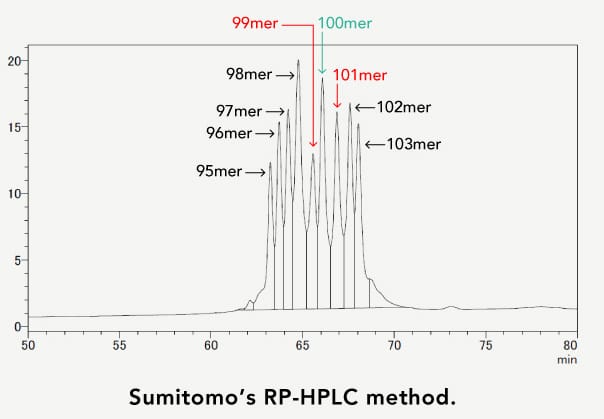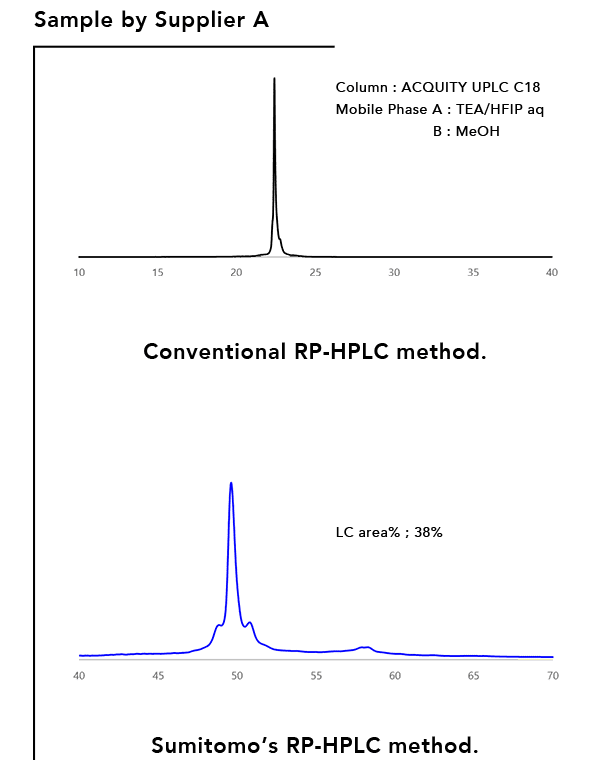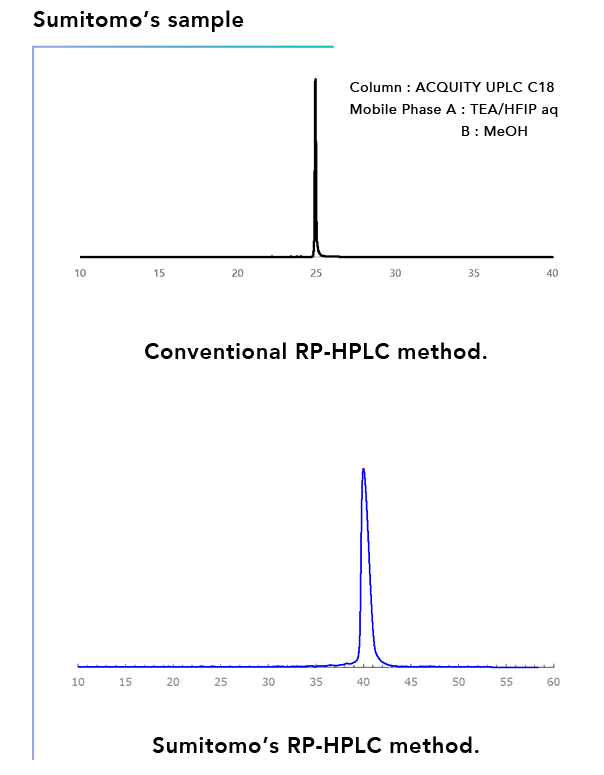TECHNOLOGIES
Direct scale-up from a single laboratory run to OP400
With its unique technologies, Sumitomo has established a Standard Manufacturing Method (SMM) for gRNAs ranging from 95 mer to 130 mer in length.
In the field of solid-phase synthesis chemistry, it is widely recognized that the scaling-up process, which includes two-phase interaction, synthesis, and purification, can be challenging to achieve. However, with the SMM, we can achieve an equivalent quality in laboratory-scale and manufacturing-scale productions.
-
RP-HPLC purity Plant 90% Lab *>85% *multiple results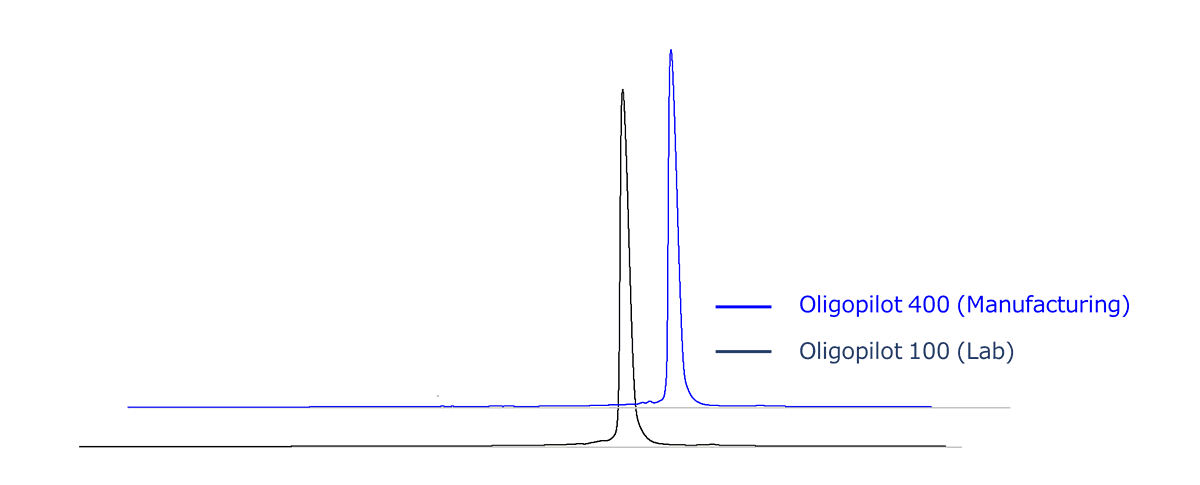 Purification method: RP-HPLC
Purification method: RP-HPLC -
The above chromatogram shows a comparison between the reversed phase high performance liquid chromatography (RP-HPLC) charts of a 100 mer gRNA manufactured using OligoPilot100(OP100) in a laboratory and using OligoPilot400(OP400) in a manufacturing facility. The charts are very similar, and the purity of the material manufactured using OP400 reached 90%.
Given the proven scalability of the SMM, a single feasibility run using OP100 is sufficient to determine the applicability of the SMM to each sequence. While the SMM is applicable to gRNAs with or without mofifications, its applicability to a specific sequence is finally confirmed by a single feasibility run. So far, Sumitomo has demonstrated that its SMM can be applied for all the gRNA sequences disclosed by its customers.
Sumitomo has successfully completed its first and second GMP campaigns in its newly built Oita Plant without any delay. Both campaigns were direct scale-ups from the laboratory scale without a pilot batch.
Sumitomo’s SMM can be applied to even longer RNAs. This is a chromatogram of a 123 mer RNA with 89% purity.
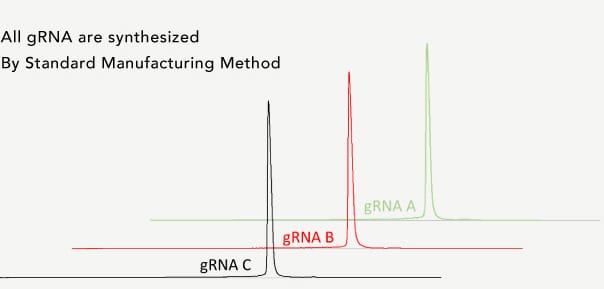
As shown here, three 100 mer gRNA sequences manufactured using the SMM show equivalent chromatographic patterns.

Anzalone, A.V., et. al. Search-and-replace genome editing without double-strand breaks or donor DNA (2019) Nature, 576 (7785), pp. 149-157.
This is a chromatogram of a 123 mer RNA with 89% purity.
Excellence in analysis
Sumitomo’s high-resolution RP-HPLC method enables you to detect n±1 mer-related impurities. You can access Sumitomo’s improved RP-HPLC method in the Resources section of this site. (here)
gRNAs claimed to be of high purity may not necessarily be of high purity.
Difference in purity between our company and other companies.
Please analyze your samples with Sumitomo’s RP-HPLC method.You can download the method here.
- REQUEST
DOCUMENTS
Sumitomo’s RP-HPLC method for 200 mer
- Sumitomo is continuously improving its analytical method for better resolution and working on its RP-HPLC method for analyzing longer gRNAs. This figure shows the chromatogram of a 200 mer gRNA.
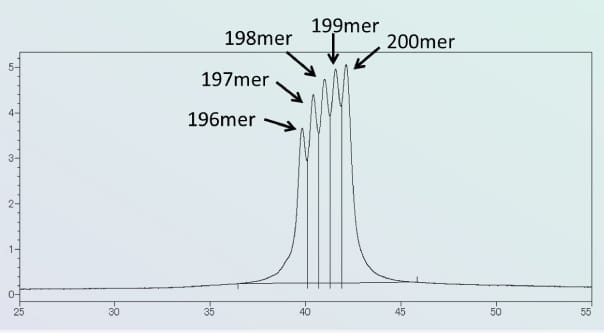
Sumitomo’s AEX-HPLC method for the detection of PS -->PO conversion
- The conversion of the PS linkage to PO may cause enzymatic digestion of RNAs. Sumitomo has established an AEX-HPLC method to detect PS=>PO conversion.Sumitomo has developed a process to control PS=>PO conversion and to check the PO content using this AEX analytical method as IPC.
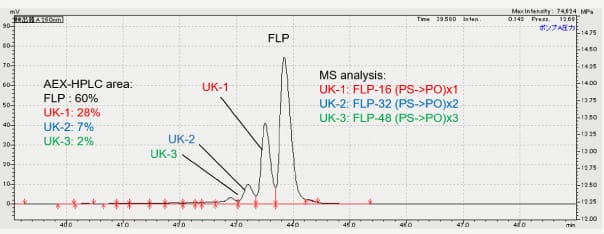
Sumitomo’s LC-MS/MS method for sequencing
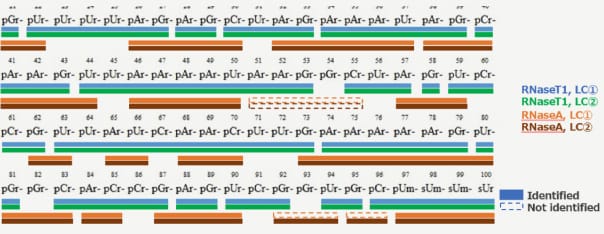
- Sumitomo’s sequencing method is a combination of enzymatic digestion and LC-MS/MS. Our method can accurately determine the sequence of gRNAs including modified nucleotides. This method is applicable for up to 130 mer length under GMP, and further improvements are ongoing.

